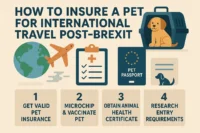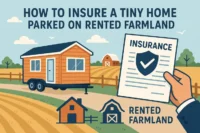What Does Gap Insurance Cover? Guide to Understanding Gap Insurance
Published: 26 Sep 2024
Introduction
Anytime an individual wishes to purchase a new or used car, particularly if they wish to borrow or lease it, the term gap insurance, is a term that is quite recurrent. While it may just look like yet another cover for the car, one must know that gap insurance does save a lot when the car is damaged or stolen. But what is in gap insurance? What does it cover and when do you need it?
In this article we will present the complete, what insurance covers, in a few tables, what is not insurable, who and when appointment insurance is required. By the end of this article you will understand how the provision of this factor can save you from making loss of earning restrictions if your car is involved in an accident or gets stolen.
What Is Gap Insurance?
Guaranteed Asset Protection insurance is of course to be insuring that difference, the gap in jargon, which arises when a truck or car is damaged or acquired insurance and borrowing is also incured. It also applies when your cars loan has been fully encashed and all that remains is the comprehensive insurance or collision that does not secure the debt that is still owing on that capital lease or loan.
Let’s say your car was a $15,000 vehicle at the time of the accident but you have a car insurance loan of $20,000. In this situation, the deficiency or loss of $5,000 will be funded by the coverage. But without any gap insurance you will out of course have to bear that difference, which in conditions of the recession obviously is not sane.
Why Do You Need Gap Insurance?
Gap insurance also serves its purpose for car buyers and renters who purchase vehicles on loans since insurances are typically worthless a year after buying the vehicle with up to 20% depreciation after most insurances. In the unfortunate event that you lose your car to theft or accidents within the first months of purchase, normal vehicle coverage will only reimburse the present cash worth of the car, which in most cases is less than the amount of loan in effect, meaning you still owe more than the car cost.
What Does Gap Insurance Cover? (3×4 Table)
| Coverage Aspect | What It Covers | Example |
|---|---|---|
| Vehicle Loan Balance | The difference between the actual cash value (ACV) of your car and the remaining balance on your car loan. | If you owe $20,000 on your loan but your car’s ACV is only $15,000, gap insurance covers the $5,000 difference. |
| Leased Vehicle Gap | For leased cars, it covers the difference between the amount left on the lease and the vehicle’s current market value. | If your leased car is worth $12,000 but you owe $15,000, gap insurance covers the $3,000 gap. |
| Depreciation | Covers the loss in value of the car due to depreciation, especially in the first few years of ownership. | A car worth $25,000 when purchased might drop to $18,000 within the first year. Gap insurance covers the $7,000 depreciation loss. |
| Loan Shortfall | If your car is totaled and your regular auto insurance doesn’t cover the full loan balance, gap insurance makes up the difference. | If your car is valued at $10,000 but you owe $12,000, gap insurance will cover the $2,000 shortfall. |
Here they are, the insures gap coverage and why you should never think twice about purchasing the additional coverage on the said policy.
Car value drops as soon as you begin using it: Car value begins to depreciate the very moment a customer takes the car they purchased from the dealer on their ownership. In particular due to the finance gap, the value of a car purchased is expected to drop significantly within the first two months
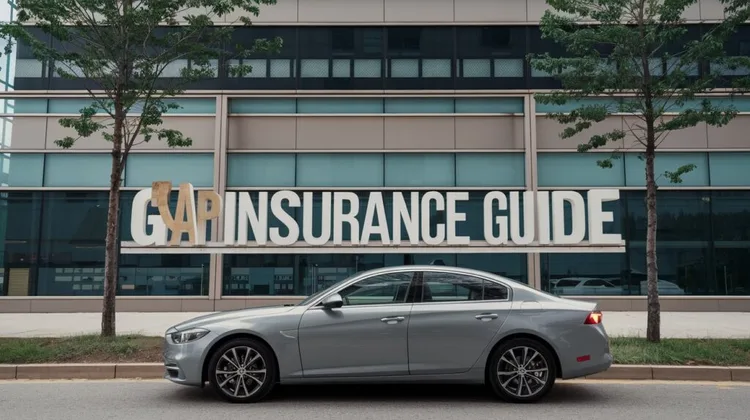
Taking on lease an automobile: Thus the gap insurance is necessary also for lease agreements, especially when the leased vehicles are costly and subject to quick depreciation.
Below standard payment: However, in case you put down a payment that was small or in case you financed most of your purchase, you are likely to find that the car is worth less than the amount owed on it.
What Is Covered Under Gaps Insurance?
- GAP insurance is designed to cover the gap between the worth of the car that is owned or is on a lease and the car loan that has not been paid off or the leased terms that have not been paid off.
- This intersection comes in especially when the circumstances noted here are true when your vehicle is. For example: Gap cover assists where the repairers of the car have repaired the car, but only have one day worth of work left on this due to some cost that is required and you do not have anywhere to get it unless more financing is provided.
- When this happens, there is a cut off on spending more because the gap insurance company is supposed to fill up this gap and any other gap sum that the policyholder has in mind as the repayable sum.
Over And Out Of Cover And Missing: When you have a regular car replacement policy as soon as your vehicle gets stolen and written off if it’s not located, insurers will compensate you the market value to that point. However, there is such a thing they call gap insurance. There may still be an amount outstanding to finish off the lease or loan that will be covered by insurances such as this.
Taking Up Of Out Of Pocket Costs: Some gaps insurance policies might even pay for your deductibles which may depend on the company providing such coverage. Following an accident, this may help to ease the burden even further.
What Gap insurance will not cover and Why
The same conclusion is drawn as always that there is still more left to be covered gaps that need to be filled in case one is insurance gapes for consideration. In this case, understanding what not to expect will help you avoid disappointments in the future:
- Coverage for internal labor or part cost in repair: For example, there would be your gaps insurance when it comes time to pay for car and others. That is when parts come up not covered.
- A total loss. Naturally to every insurance product there will come a time when gap insurance is needed for normal wear and tear or wear and tear. Some risks are internal that will certainly be appreciated when that time comes.
- Coverage under an Endorsement: No medical expense will be covered in this section under car insurance as this is issued for endorsement. Medical talks about getting car insurance coverage on the insured car only.
- The coverage includes payment of car payments in default: Individuals in this category of borrowers do not enjoy the benefit of having insurance coverage for any payments made under a lease and mortgage that have been missed.
Contribute your down payments: In the same manner that the gap insurance will take care of payments made towards acquiring the car even if the car departs the gap insurance will not pay any amount in terms of down payments.
When Do You Need Gap Insurance Policy Coverage?
The car insurance policy by Enterprise does not cover every individual and there are moments when the necessity for gap insurance persists.
New car buyers: A purchasing car depreciation starts at once and worsens especially within the first two years from the time of purchase of the car. Therefore, gap insurance cover is also important for the people who buy a new car.
Leaseholders: Most of the leasing companies will require that you get a gap insurance policy due to the fact the cars are leased and lose their value very quickly, there is a time lag when balance due and value converges.
Low or no down payments: A small down payment should be the reason an insurance policy that covers away from home insurance would be taken out this may keep one in good books from being upside down in terms of the value of their asset within the first years of borrowing.
Long term Loans: This is a good example of how most car owners take a car loan for a period of five years and above. This however is not such a good idea as there is a very high chance that the value of the car will fall below the loan still owing on it.
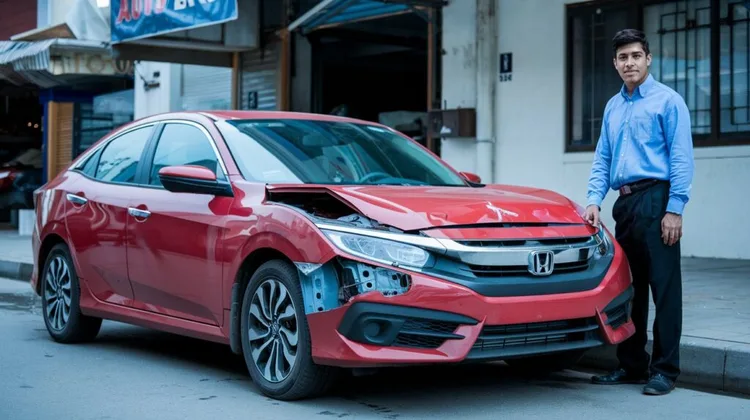
How to obtain Gap Insurance
It is that simple to get a gap insurance. Insurance needs to cover gap risks through two main ways:
- At the Dealership: When one is purchasing or leasing an automobile, one may have to come across dealers that offer gap insurer options. However, in most cases, this option is much more expensive than if it is purchased from the insurer.
- With Your Auto Insurance Provider: The majority of such companies have extensive coverage on equipment insurance as a secondary primacy line. This is the case, which is fairly common as most people tend to opt more on this since it is relatively cheap and quite convenient.
- This is to encourage that many people should be able to check for the various rates and options offered by the different providers in order to be able to have the better experience.
What is included in the payout on Gap Insurance?
The gap insurance only takes effect if the loss reaches a certain amount that exceeds any amount recovered from the vehicle’s ACV or principal balance still owed against the vehicle through a loan or that covered by the lease.
In case your car was worth $15,000 when it was designated as a total loss, but you still owe $18,000 on your loan, the gap insurance would pay $3,000.
There is a possibility that the car in this scenario is the same one that was stolen, which is why there is a need for this insurance cover.
Gap Insurance on Leased vs Financed Vehicle
There is not much of a difference in the objectives of this insurance for a lease vehicle and that of a financed vehicle but there are some differences as well:
- Leased Vehicles: Even though the depreciation of a leased car is typically higher and faster, most leasing firms will simply add gap insurance to the lease payments. Such insurance policies enable you to evade the serious expenses that come with excess damage or theft of the car.
- Financed Vehicles: Although nowadays, one may not be given an option of buying gap insurance, it is always best to obtain this cover whenever financing is involved particularly in the situation where one is making a small down payment or taking a long term loan.
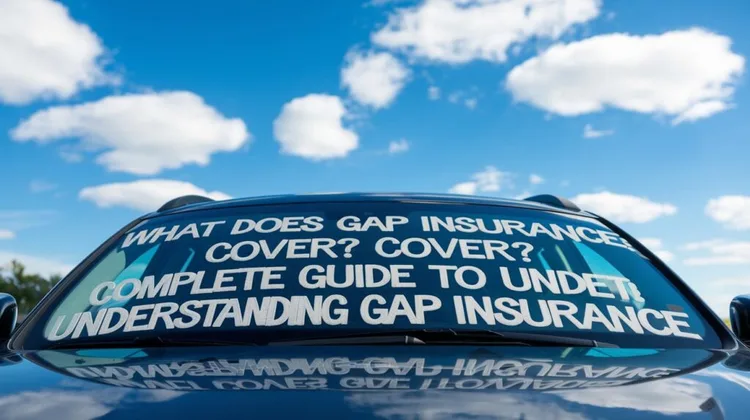
What Are The Price Ranges For Gap Insurance Coverage?
The cost of gap insurance coverage depends on several factors such as the amount the car is worth, the loan or lease duration and the company providing the insurance. In general, the costs of gap insurance are approximately $200 to $400 annually when bought from dealerships for a year. However, in the event that it is included within the car insurance policy, it may observe lower charges of about 20 to 40 dollars a year.
Here are a few factors that affect the amount you will pay for gap insurance:
- The value of the vehicle.
- The length of your loan or lease.
- The depreciation of the car.
How Long Should you Keep the Gap Insurance?
For most people who do not take conventional loans to buy vehicles, you only need gap insurance when you are financing the automobile and still owe more on the auto loan than it is worth. That’s when you should come out of the gap debt cover. As soon as your loan amount becomes equal to or lower than the ACV of the car, you may remove the gap-insurance cover which has practically become useless.
The majority of the population maintains this form of coverage for at least the first 2 to three years of the loan period as that is around the average period when the outstanding loan balance approximates the market value of the place.
Yes, in regard to your question, you can buy gap insurance after you have already purchased your car. Gap insurance does not need to be purchased right away. If you did not get Gap insurance from the dealer on the spot, you could, however, add it on many worksheets within a certain time period, usually the first few months from the purchase date.
| Coverage Aspect | What It Covers | Example |
|---|---|---|
| Vehicle Loan Balance | The difference between the actual cash value (ACV) of your car and the remaining balance on your car loan. | If you owe $20,000 on your loan but your car’s ACV is only $15,000, gap insurance covers the $5,000 difference. |
| Leased Vehicle Gap | For leased cars, it covers the difference between the amount left on the lease and the vehicle’s current market value. | If your leased car is worth $12,000 but you owe $15,000, gap insurance covers the $3,000 gap. |
| Depreciation | Covers the loss in value of the car due to depreciation, especially in the first few years of ownership. | A car worth $25,000 when purchased might drop to $18,000 within the first year. Gap insurance covers the $7,000 depreciation loss. |
| Loan Shortfall | If your car is totaled and your regular auto insurance doesn’t cover the full loan balance, gap insurance makes up the difference. | If your car is valued at $10,000 but you owe $12,000, gap insurance will cover the $2,000 shortfall. |
For instance, they should be able to let the insurer know that such coverage is desired so that if it can be offered as an attachment it can be taken.
Making Car Loan Type Gap Insurance Easier By Explaining The Impact Of Depreciating Cars
There is specifically room for gap insurance to be mentioned when depreciation is involved. Typically, a car depreciates 20 to 30 percent of its cost in the first year after it has been purchased. The percentage loss in these two or three years for the later figure increases even after a purchase causing a big difference between the worth of the vehicle hence what is owed regarding it.
That is, you are protected in this rapidly declining value.
What Types of Vehicles Are More Likely Eligible for Gap Coverage?
- Gap insurance is very versatile as it usually refers to leasing or purchasing any new or second-hand vehicle through finance. However, it may not be applicable for:
- Older high mileage units
- Salvaged and rebuilt units
- Heavily customized cars
- Call your insurance company to inquire whether that kind of vehicle is included in the range of vehicles that gap insurance can cover.
Gap Insurance and Full Coverage – Difference
This has been taken casually by many as people just understand that gap insurance is the same as full else else where referring to two products that are ideally two different products that they appear to be one and same.
What obtains here is full commercial insurance coverage which is in most cases demanded of vehicle owners/ borrowers on a vehicle until the loan or balance outstanding has been settled. The owners/ voters here are in most cases bifold and both collision and underwriters offer protection that pertains to the destruction of a vehicle through means of accidents, theft’s, or even creative kids that enjoy painting.
The deductible refers to this insurance as most insurance just refers to the where there is usually an insurable exposure. This exposure occurs when very few individuals want to go over that into renew either the loan or the underlying lease and it is the remaining amount.
Even with full coverage of walls, which will reimburse you funds to repair your damaged car for normal accidents and events, how does a gap insurance serve you when your car is completely written off the books as being of no value, leaving you to owe no more than the value of the car?
Ways to Pay Less for Gap Insurance
Comparison shopping: Look for possible options for pricing for more than one gap insurance provider, your auto insurance provider and the dealer.
There are several cost factors associated with gap insurance that can be avoided:
Insurance bundling: Some policies in specific companies will enable you to combine gap and auto insurance so you get savings.
Cut a deal at the dealer: Where a dealer offers it, request for a discount since it is likely that the dealer will mark the price up.
Conclusion:
It is difficult to imagine what repercussions would come upon any person’s savings in case that person happened to damage or lose the recently acquired or rented car on lease. Gap insurance is a major support when it comes to the stubborn car owners and particularly when they acquire a new, a leased or financed vehicle. Faster then and faster this investment process, is to avoid putting money into buying a tune up for a car which is either already out wrecked or lost and gone, is when one is actively relocating from one place to another in order to avoid the discomforts of the gradual depreciation of the car during its breakdown since the impacts are felt the worst painful.

Given an understanding of coverages offered by gap insurance, annual extension policies, the objective behind their relevance, the enabling strategies, any individual can have a good understanding of fending them off. It is through sliding into competition that better and even cheaper providers are found, which is always the wisest approach and finally the retainer of the policy, provided that gap insurance has proved to be more than reasonable and no controversy in extending it, should continue.
FAQS
Gap insurance, does it work?
Yes, there is gap insurance for cars in case of theft where the car cannot be traced and the loan is not yet settled.
For what duration should I keep up the gap insurance?
Whenever your loan exceeds the net sale value of your car, as expressed to net value, that should for the most be restricted to the first 2 to 3 years.
Does gap insurance prevent you from getting a loan after purchasing the vehicle?
Yes, gapped coverage can still be tack on to the stock policy even if the auto insurance coverage has already been purchased prior to the buying of the vehicle.
How do gap insurance and full cover insurance differ?
The way that most adults think of auto insurance is known as full coverage, which covers collision, theft and damage; however, this insurance continues, even after the car is declared a total loss.
Would any repairs be covered when filling a gap insurance claim?
So what is included in the gap insurance is handgun coverage whereas gap insurance can incorporate costs associated with covering repairs to do with total loss of the vehicle or worrying about it getting stolen.
How does one go about calculating Gap Insurance?
Gap insurance helps cover that difference of how much the vehicle costs less the loan terms or amounts due under the loan or lease.

- Be Respectful
- Stay Relevant
- Stay Positive
- True Feedback
- Encourage Discussion
- Avoid Spamming
- No Fake News
- Don't Copy-Paste
- No Personal Attacks

- Be Respectful
- Stay Relevant
- Stay Positive
- True Feedback
- Encourage Discussion
- Avoid Spamming
- No Fake News
- Don't Copy-Paste
- No Personal Attacks


